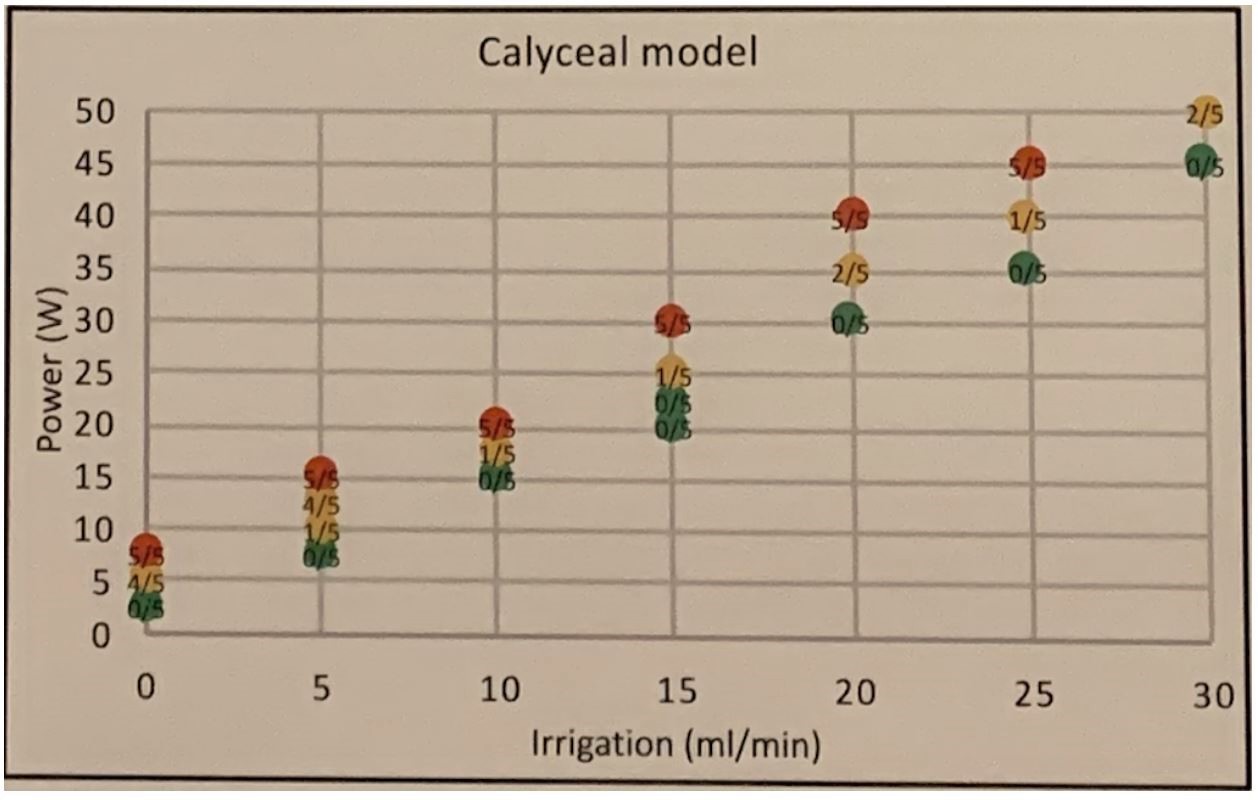Figure 1.

Figure 2.

They found that a linear safety boundary/threshold in each scenario. The renal pelvis was able to tolerate the highest laser power while the renal calyx had the lowest tolerance of power. Figure 3 depicts the calyceal model and the linear relationship. The red circle represents exceeding the thermal dose threshold 100% of times while the green circles represent no instance of excess thermal dose. The yellow circles represent a fraction of trials that had a toxic thermal dose. The examples given show the linear relationship of the amount of energy used correlating with the rate of irrigation fluid. The specific example given to further highlight this point is: when using a laser setting between 15 – 30W an irrigation rate between 10 – 20 ml/min is needed.
Figure 3.

This study highlights through a benchtop study the safety thresholds of thermal dose with laser lithotripsy. The renal pelvis has a higher thermal dose tolerance than the ureter or calyx.
Presented by: Ali Aldoukhi, MBBS, MS, Research Fellow, Department of Urology, University of Michigan, Ann Arbor, Michigan


